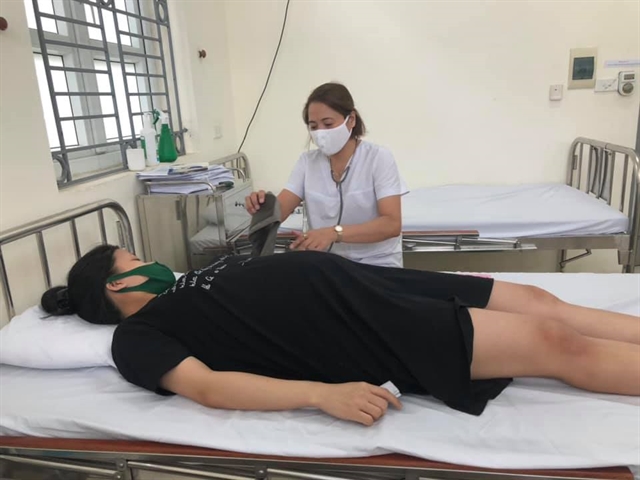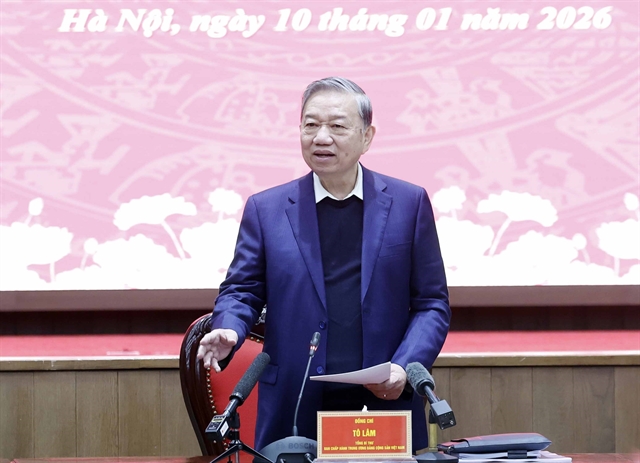 Society
Society

Clinics in communes have improved their healthcare services and facilities to attract more local people and reduce patient overloads at city and province-level hospitals.

|
| A pregnant woman at the clinic of Tân Hội Commune of Hà Nội's suburban Đan Phượng District. VNA/VNS Photo |
HÀ NỘI – Clinics in communes have improved their healthcare services and facilities to attract more local people and reduce patient overloads at city and province-level hospitals.
For years commune-level clinics had poor reputations and few patients, but that image has changed.
The clinic of Tân Hội Commune in Hà Nội’s suburban district of Đan Phượng is an example.
In recent years, local people have been going to the commune clinic when they have health problems instead of the city hospitals as before.
Every day, the clinic receives people for vaccinations, pregnancy checks, to pick up medicine or those hospitalised due to accidents, according to doctor Trần Thị Mai Hương, head of the clinic.
As one of the outstanding commune-level clinics of Hà Nội, Tân Hội Clinic has contributed to improving the quality of primary healthcare for people in the commune, attracting more and more patients and creating trust in local medical examination and treatment.
“The number of patients who have come to check their health and get medical treatment in the clinic has increased year by year,” said Hương.
“Last year, the clinic provided medical examinations for more than 10,000 people, doubling the numbers in previous years,” the doctor said.
“So far, we have given monthly health checks and medicine for 597 patients with hypertension and 145 patients with diabetes. In the first eight months of this year, the number of the two groups of patients remarkably increased from previous years,” the doctor said.
“The main reason for increasing trust of the people in the commune clinic was that the qualifications of medical workers and quality of medical services have been improved, and people can now come to the nearest place for medical examination and treatment, and the full cost of examination and treatment is covered by health insurance,” she added.
Expanding the medicine and medical techniques covered by health insurance has also helped attract more patients to the clinic.
Tân Hội Clinic has been approved for nearly 1,100 medical techniques and 140 kinds of medicines.
Similarly, the clinic in Minh Châu Commune of suburban Ba Vì District with nine doctors and 20 well-equipped departments has attracted more patients in recent years.
Doctor Châu Lê Thị Lộc, the clinic’s head, said since applying the family medicine model, local people had more trust in the clinic.
Every month, the clinic received 400 patients, double the figure of previous years, said Lộc.
The clinic can offer 80 per cent of examination and treatment techniques of the basic medical package service on the health insurance list.
According to the Hà Nội Health Department, since last year, the city had launched 456 standardised clinics in communes, reaching 95.19 per cent of the target.
The commune-level health establishments are fully invested in terms of infrastructure, medical equipment and human resources which has helped local people access quality medical services and help localities carry out preventive healthcare.
The department’s statistics showed that the total number of patients at these grassroots-level clinics was more than 900,000 for the first eight months this year, equal to 248 patients per month per facility.
Medical experts have said the grassroots healthcare system is the foundation of the national health system and if the grassroots system is done well, it can meet 70 per cent of common healthcare needs.
Commune clinics are responsible for providing primary healthcare services including preventive medicine, medical examination and treatment, reproductive healthcare, supplying essential drugs, and community health management.
Việt Nam has set a target that by 2025, over 90 per cent of the population will have health management records, 95 per cent of commune, ward and town health establishments will carry out preventive medicine and provide treatment of some non-infectious diseases such as hypertension and diabetes, and by 2030, more than 95 per cent of the population will have health management and 100 per cent of grassroots clinics will be able to treat some non-infectious diseases.
This is a goal that requires considerable efforts, including the role of expanding health insurance coverage at grassroots healthcare facilities.
Effective use of health insurance
According to doctor Hương, the major difficulty for commune clinics at present is a lack of human resources.
In addition, examination and counselling for early detection of diseases for people with risk factors have not been widely implemented because they are not yet covered by health insurance, she said.
The payment for health insurance is still difficult and new techniques are only covered up to 70 per cent.
“If the issues were solved, the local people would be examined and treated in the clinics which would help reduce the transfer to upper-level hospitals,” Hương said.
To improve the quality of grassroots healthcare, the Ministry of Health will step by step reform the payment method, issue and update the basic health service package in accordance with the health insurance fund and State budget.
Currently, the ministry is surveying 26 commune clinics of eight provinces and cities in the northern, central and southern regions to pilot a medical programme.
Under the programme, the clinics will work in a family medicine form that all local people will have their health supervised and get medical examinations at least once a year.
The delivery of medicines to treat chronic diseases such as diabetes, hypertension, HIV/AIDS, tuberculosis at the clinics is one of the priorities of the ministry to reduce the patient overload for higher-level hospitals and cut travel costs and increase treatment compliance of patients.
To improve the treatment of grassroots-level healthcare establishments and encourage people to buy health insurance, the ministry issued a circular regulating the lists and rates of insurance payment for pharmaceutical products, bio-products and radioactive drugs
Under the circular, 61 new drugs were added to the list of insurance payment to meet the treatment needs and suitable for the development of the pharmaceutical industry
The ministry has increased the rate of insurance payment for six new drugs to facilitate patients with health insurance cards to increase access to medicines at the clinics.
According to experts, to strengthen healthcare services covered by health insurance at commune clinics, the health sector must focus on reforming the healthcare payment mechanism covered by health insurance.
The payment reform should not regulate the percentage of health insurance funds used at clinics but implement capitation payments, issue a basic health service package at the communal level, strengthen management and treatment of chronic diseases, especially for those diagnosed at higher levels, and comply with the ministry’s treatment protocol.
In terms of infrastructure facilities, clinics should be invested with housing and equipment under the standardised model as well as develop common software to manage information about clinics’ activities and people's health records. – VNS




